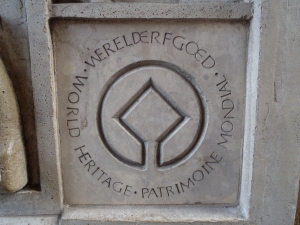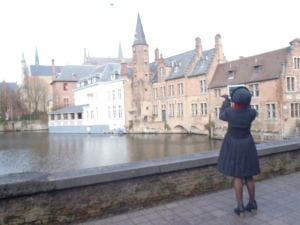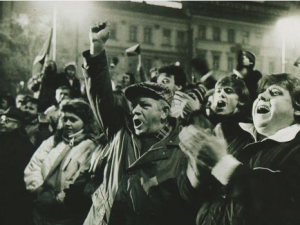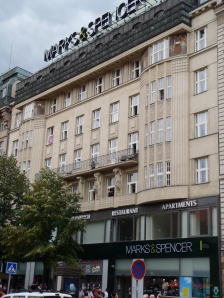Over the New Year, I had a weekend break in Brugge in Belgium. Brugge is a key UNESCO World Heritage Site, an “outstanding example of medieval historic settlement”, and famed for its brick Gothic buildings, which “form part of the town’s identity” (UNESCO website: http://whc.unesco.org/en/list/996). We made our way slowly through the crowds in the Market Square, admired some of the medieval brick Gothic buildings, and then – along with everyone else – found a spot where we could eat chips with mayonnaise. After eating our chips, we found a quiet bar and drank a range of local beers, before buying some chocolate to take home.
The notion of a World Heritage Site conveys a sense of universality of certain values and heritage assets that should be treasured and preserved. But what are these values? And what is universal about them? On the one hand, despite some broadening towards the intangible in recent years, much of the literature and policy documents surrounding World Heritage Sites focus almost entirely on physical objects and buildings, especially those of prestige nature, such as castles, palaces and cathedrals. There also tends to be an assumed hierarchy that places ‘high culture’, especially associated with the European Enlightenment at the apex of what must be valued.
Recent years have witnessed a good deal of criticism of UNESCO, and some concerted attempts to broaden the nature and remit of World Heritage status, to give more space to non-Eurocentric, and more intangible forms of heritage. Alongside this process, however, as Rodney Harrison (2012) has recently pointed out, UNESCO World Heritage Site status has become a powerful brand, which has arguably resulted in the displacement of families and commercial exploitation that is increasingly controlled by large businesses and the state. Furthermore, as John Giblin (forthcoming) has argued, there appear to be some inherent contradictions in the nature of ‘universal heritage’ as defined by the UNESCO brand – in particular, how the promotion of cultural diversity and heritage plurality fits into an ideal for shared heritage values and an obsession with universality.
On the ground, however, while there is no mention of chocolate, waffles, chips with mayonnaise, and a plenitude of different craft beers in the official UNESCO documentation, it strikes me that most of the visitors to Brugge appear to have no problem in identifying some common traits and experiences in the heritage of this most valuable of World Heritage Sites. The Universality of World Heritage Sites, therefore, appears to end up as something that lies within the realms of a commodified and touristic experience, often to the exclusion of local people and the marginalised. Is there any ‘Universal’ heritage that we should celebrate at World Heritage Sites?
Two years ago, I visited Prague for a conference. Another key European city World Heritage Site – perhaps even more crowded and admired than Brugge – and “one of the most beautiful cities of Europe” according to the UNESCO website (http://whc.unesco.org/en/list/616). UNESCO implores the visitor to admire the castle, the palaces and the burger houses. There is no mention in any of the documents about the moment that I remember Prague for – the balcony speeches by Alexander Dubček and Václav Havel in 1989. When I visited Prague in 2012, I looked for the balcony. There were no UNESCO plaques or interpretation boards, but every local person whom I spoke to knew exactly where it was: a key site within the city that all residents were aware of and revered; where a seminal moment in the course of humanity’s existence on this planet took place …. An unmarked balcony above a large Marks and Spencer department store.
Giblin, J. (forthcoming) ‘Post-conflict heritage: symbolic healing and cultural renewal’, International Journal of Heritage Studies, DOI: 10.1080/13527258.2013.772912.
Harrison (R. (2012) Heritage: Critical Approaches, (Routledge; London).
Photo of crowd scene in Prague, from Opportunist Magazine: http://opportunistmagazine.com/revolutionary-movements-the-velvet-revolution-name/




